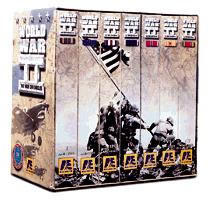BLOGGING THE HURRICANE, Day 3: Updates All Day from the Scene as the Disaster Spreads
HURRICANE COVERAGE
Did New Orleans Catastrophe Have to Happen?
Editor of Biloxi Paper Surfaces With a Column
'Times-Picayune' Finds New Home, Reports Looting
For 'St. Pete Times,' Katrina Coverage is a Test of Preparedness
Baton Rouge Paper Rides Out the Storm
Biloxi Paper Perseveres
Hurricane Blog, Day 2
Hurricane Blog, Day 1 ***10:20 AM ET. Word on the reaction of two of New Orleans' most famous native sons, Eli and Peyton Manning, courtesy of the Times-Picayune site:"Their parents, Archie and Olivia, evacuated to Philadelphia, Miss. And brother Cooper left with his family to Oxford, Miss.“'It’s pretty devastating, the pictures you see and the stories you hear,'” Peyton said. “'It’s hard to watch from a New Orleans standpoint and from a friends-and-family standpoint. … The Superdome is one thing, but I don’t need to see pictures. When I hear about certain areas, I know where they are. I used to play football in Buras and they’re not prepared for anything like a powerful hurricane.”"Said Eli: 'I talked to Mom last night, and she’s mad she didn’t put more things upstairs. … I know there’s going to be a whole lot of damage, so I keep it in my prayers and hopefully everybody will be alright.'”***9:55 AM ET. The Times-Picayune, which has relocated to Houma, published online only again today, this time with a 13-page PDF version. Unlike the Tuesday issue, which ran 28 pages, the paper this time did not provide an in-the-can Living section. The banner head reads: UNDER WATER.Latest update from the paper's Web site: "The catastrophic flooding that filled the bowl that is New Orleans on Monday and Tuesday will only get worse over the next few days because rainfall from Hurricane Katrina continues to flow into Lake Pontchartrain from north shore rivers and streams, and east winds and a 17.5-foot storm crest on the Pearl River block the outflow water through the Rigolets and Chef Menteur Pass. "
© AP Photo/The Dallas Morning News, Louis Deluca A wheelchair lies on the beach off Highway 90 in Gulfport, Miss., Tuesday, Aug. 30, 2005.***7:30 AM ET. From the Times-Picayune:"Late Tuesday, Gov. Blanco spokeswoman Denise Bottcher described a disturbing scene unfolding in uptown New Orleans, where looters were trying to break into Children's Hospital."Bottcher said the director of the hospital fears for the safety of the staff and the 100 kids inside the hospital. The director said the hospital is locked, but that the looters were trying to break in and had gathered outside the facility. The director has sought help from the police, but, due to rising flood waters, police have not been able to respond."Bottcher said Blanco has been told of the situation and has informed the National Guard. However, Bottcher said, the National Guard has also been unable to respond."***11:30 PM ET (Tuesday). From the Sun Herald in Biloxi, after its blog had been down for quite awhile:"Communications to the Biloxi area are down--phone, e-mail, Internet .... These connectivity issues are what have kept Don Hammack and Geoff Pender from updating this blog."If you are from the area, please call 1-866-453-1925 to let someone know that you're OK. Even if you fled before the storm, friends and relatives might not know you're safe. We hope to share that information when we can."If you work for The Sun Herald, call 1-800-346-2472 to let us know where you are."As we know the news, we will post it to SunHerald.com. We're in this with you for the long haul."





















